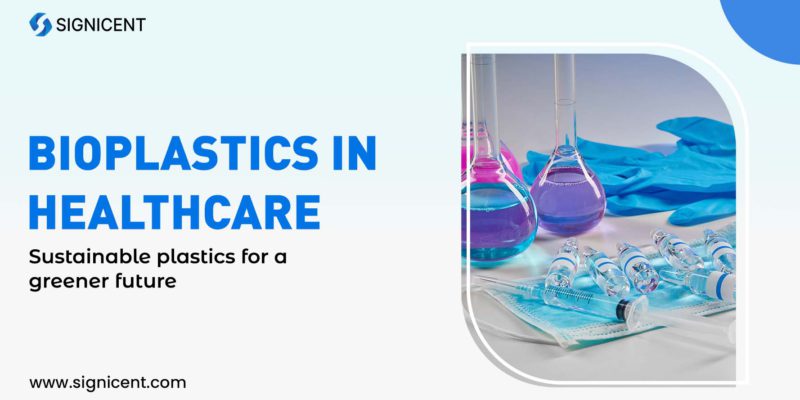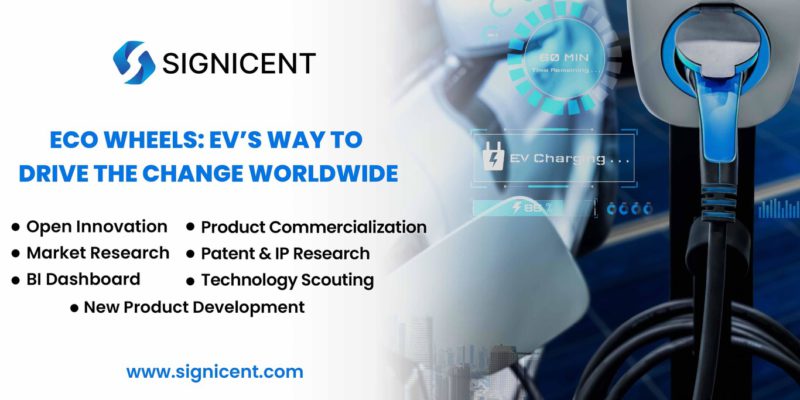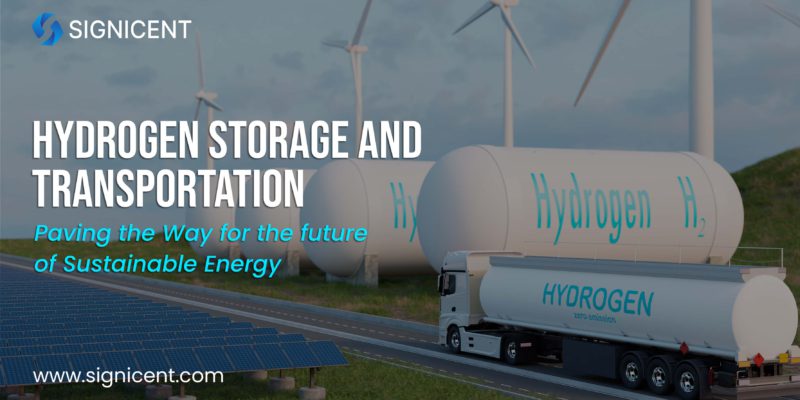Plastic has saved countless lives in the medical world—sterile syringes, IV bags, and surgical tools are miracles of modern care. Yet these lifesavers hide a cruel irony: the same plastics protecting patients today are poisoning their tomorrow. However, its environmental cost is mounting. Each year, tons of non-biodegradable plastic waste accumulates, polluting land and oceans and threatening ecosystems. According to a report by the United Nations Environment Programme (UNEP), the statement that the world generates approximately 400 million tonnes of plastic waste annually, with nearly 13 million tonnes ending up in oceans. Ocean plastic harms marine life through entanglement, ingestion, and ecosystem disruptions, creating long-term ecological imbalances and risking the survival of various species.
Microplastics from ocean pollution can infiltrate the food chain, potentially impacting human health through contamination, raising concerns about the safety of water and seafood consumption. The medical industry, a critical sector heavily reliant on plastics, is no exception to this environmental crisis.
Bioplastics offers a beacon of hope amid this grim reality. These materials not only reduce dependence on fossil fuels but also possess a lower carbon footprint and, in many cases, are biodegradable or compostable. As environmental concerns reach critical levels, the medical industry’s transition toward sustainable alternatives becomes more than a choice—it becomes a necessity. This article explains the role of bioplastics in the medical field, their applications, challenges, innovations, and how they are shaping a healthier, greener future for both people and the planet.
Signicent’s Patent Landscape Analysis provides deep insights into emerging bioplastic technologies, market trends, and competitor strategies, helping businesses navigate innovation challenges and stay competitive in sustainable medical solutions.
What Are Bioplastics?
Bioplastics are a category of materials made from renewable biological sources such as corn starch, sugarcane, or vegetable fats. Unlike conventional plastics, which are derived from fossil fuels, bioplastics are biodegradable or compostable, significantly reducing their environmental impact.
There are two main types of bioplastics:
- Bio-based Plastics: Derived from renewable resources but may not always be biodegradable.
- Biodegradable Plastics: Capable of breaking down naturally in the environment under specific conditions.
These materials represent a promising solution to the global plastic waste crisis, particularly in healthcare, where plastic usage is widespread and often essential for safety and hygiene.
Each year Signicent provides consultancy to hundreds of organizations to help transform their innovations to value.
How Can Bioplastics Replace Conventional Plastics?
Bioplastics replace traditional plastics by reducing carbon emissions, offering biodegradability, and ensuring eco-friendly, reliable solutions for medical tools and packaging.
- Lowering Carbon Footprints: Bioplastics minimize carbon emissions during production, aligning with global sustainability goals and reducing reliance on fossil fuels.
- Biodegradable Advantage: These materials break down naturally, combating plastic waste accumulation and addressing long-term environmental challenges.
- Sustainable Medical Alternatives: Bioplastics can replace single-use medical tools and packaging without compromising sterility or performance.
We conduct Technology Gap Analysis to identify missing innovations in bioplastics, helping companies develop novel, eco-friendly solutions that enhance durability, performance, and sustainability in medical applications.
Global Level Challenges Are Top Priorities in This Sector
Plastics are deeply embedded in daily routines and industrial practices, creating significant challenges:
- Plastic Waste Accumulation: Single-use plastics in healthcare contribute heavily to landfills and ocean pollution.
- Toxicity Risks: Plastics release harmful chemicals that endanger public health and ecosystems.
- Carbon Emissions: High energy consumption during production and disposal worsens climate change.
- Marine Life Threats: Plastics disrupt marine ecosystems, harming species through ingestion and entanglement.
- Land Contamination: Improper disposal reduces soil fertility and harms agriculture.
- Recycling Limitations: Medical plastics, often contaminated, are challenging to recycle.
Growing Importance of Bioplastics
Bioplastics can redefine healthcare by:
- Reducing dependency on fossil fuels.
- Offering biocompatible solutions for medical devices and drug delivery.
- Complying with emerging environmental regulations.
By integrating bioplastics, the medical industry can enhance its sustainability while improving patient outcomes, paving the way for a healthier planet.
Our Technology Scouting Services help companies discover groundbreaking bioplastic innovations, such as bio-based PPE, eco-friendly implants, and sustainable packaging solutions, fostering competitive advantage in the green healthcare industry.
Technologies Redefining Bioplastics in the Medical Industry
- Nanotechnology: Embedding silver nanoparticles in bioplastic polymers to reduce bacterial contamination in medical tools.
- Hybrid Bioplastics: Using polylactic acid (PLA) and polyethylene glycol (PEG) blends to enhance flexibility and durability.
- Biodegradable Coatings: Applying chitosan-based coatings to medical packaging for controlled degradation and antimicrobial properties.
- Microbial Fermentation: Producing polyhydroxyalkanoates (PHA) using bacteria for medical-grade bioplastics.
New-Age Breakthroughs in Innovation
- 3D-Printed Bioplastic Devices: Printing medical implants and prosthetics using PLA and polycaprolactone (PCL) for improved biocompatibility.
- Closed-Loop Recycling Systems: Recovering and processing PLA-based medical waste for reuse in new bioplastic products.
- Biodegradable PPE: Developing face masks and gloves from PHA and starch-based polymers to reduce disposal impact.
- Advanced Bioplastics: Enhancing polybutylene succinate (PBS) for long-term stability in medical applications.
Our Freedom to Operate (FTO) Search helps bioplastic innovators identify potential patent infringement risks before entering markets, ensuring smooth commercialization and regulatory compliance in the healthcare sector.
Examples of Bioplastic Products in the Medical Industry
1. BASF – Ecovio® (PBAT/PLA Blend) – A compostable polymer blend of polybutylene adipate terephthalate (PBAT) and polylactic acid (PLA).
- Used for biodegradable surgical drapes and packaging that break down in industrial composters.
- Reduces hospital waste by replacing PVC in single-use items.
Why It’s a Game-Changer: BASF’s material meets ISO 10993 biocompatibility standards, ensuring safety for skin contact.
2. Corbion – PuriPlast® PLA – High-purity polylactic acid (PLA) derived from sugarcane.
- Forms the backbone of 3D-printed bone screws and absorbable stents.
- Used in drug-eluting implants that dissolve after releasing medication.
Why It’s a Game-Changer: Corbion’s PLA degrades into harmless lactic acid, eliminating the need for secondary surgery.
3. NatureWorks – Ingeo™ PLA – A versatile PLA bioplastic made from fermented corn starch.
- Powers sterile packaging for surgical tools and IV components.
- Tested for bio-printed tissues due to its porous, cell-friendly structure.
Why It’s a Game-Changer: Ingeo™ cuts carbon emissions by 80% vs. conventional plastics.
4. Mitsubishi Chemical – BioPBS™– Polybutylene succinate (PBS) synthesized from renewable biomass.
Medical Marvels:
- Ideal for flexible tubing and wearable drug patches due to its elasticity.
- Resists hydrolysis, making it perfect for liquid medical devices.
Why It’s a Game-Changer: BioPBS™ retains strength in autoclave sterilization (120°C+).
5. Evonik – RESOMER® – A family of bioresorbable polymers (PLGA, PCL) for implants.
- Used in dissolvable sutures and scaffolds for tissue regeneration.
- Customizable degradation rates (weeks to years) for precision medicine.
Why It’s a Game-Changer: RESOMER® is FDA-approved and widely used in orthopedics and cardiology.
Signicent’s Chemical and Biological Sequence Search supports research in biodegradable polymers, helping companies identify novel bio-based materials for sustainable medical applications and ensuring patent protection for innovative compounds.
Major Leading Benefits of Using Bioplastics in the Medical Industry
- Environmental Sustainability
- Bioplastics are derived from renewable resources, reducing reliance on fossil fuels.
- They have a lower carbon footprint compared to conventional plastics.
- Many bioplastics are biodegradable or compostable, minimizing waste in landfills.
- Biocompatibility: Certain bioplastics, like polylactic acid (PLA) and polyhydroxyalkanoates (PHA), are biocompatible, making them ideal for medical applications such as implants, sutures, and drug delivery systems.
- Reduced Risk of Toxicity: Unlike traditional plastics, bioplastics do not release harmful chemicals like bisphenol A (BPA), ensuring patient safety.
- Innovative Applications: Bioplastics enables the development of advanced medical devices and packaging solutions, such as antimicrobial coatings and biodegradable sutures.
- Regulatory Compliance: With increasing regulations on single-use plastics, bioplastics provide a compliant and future-proof solution for the medical industry.
Signicent’s Technology Landscape Analysis provides a comprehensive view of advancements in bioplastics, highlighting market gaps, key players, and commercialization opportunities in sustainable healthcare and medical applications.
Applications of Bioplastics in the Medical Industry
- Medical Packaging: Bioplastics is used to manufacture eco-friendly medical packaging, including blister packs, vials, and bottles. These materials maintain sterility while reducing environmental impact.
- Surgical Instruments: Single-use surgical instruments made from bioplastics ensure hygiene and reduce the need for sterilization, cutting down energy consumption.
- Implants and Prosthetics: Bioplastics like PHA are used in biodegradable implants that naturally dissolve in the body, eliminating the need for removal surgeries.
- Drug Delivery Systems: Biodegradable plastics facilitate controlled drug release, enhancing patient outcomes and reducing medical waste.
- Personal Protective Equipment (PPE): Bioplastics are being explored for manufacturing sustainable PPE, including masks and gowns, to tackle the rising plastic waste generated during pandemics.
Market Outlook
As per Signicent’s Market Research, the Global Bioplastics in medical industry Market size is likely to reach values in the ranges shown below.
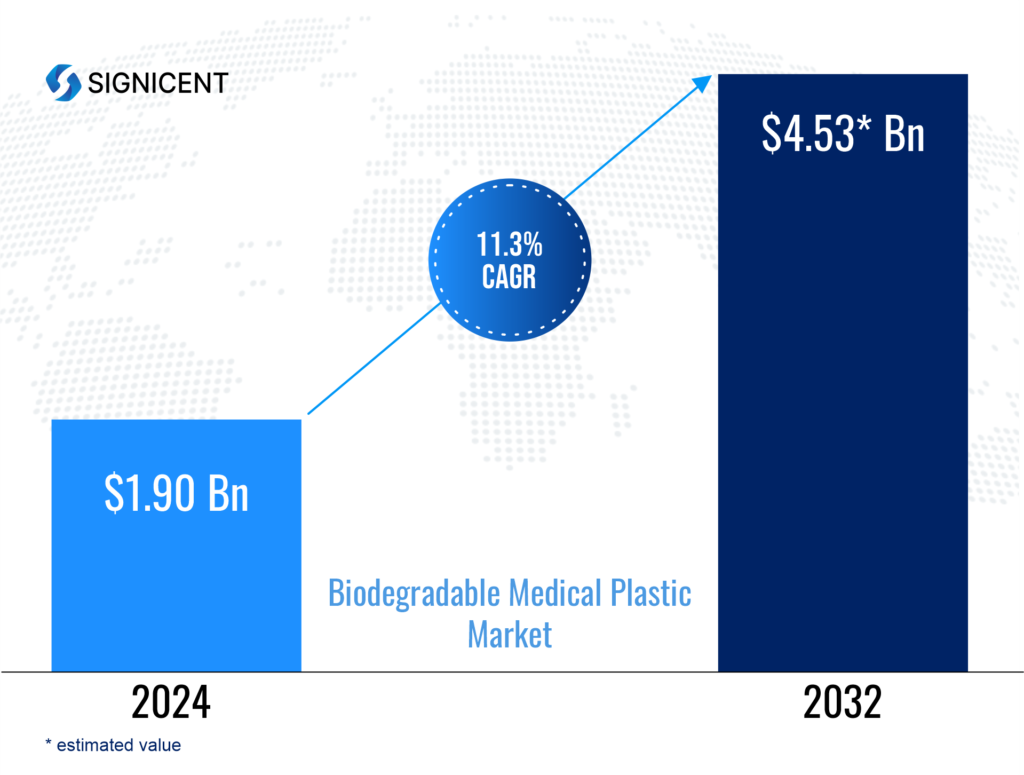
The healthcare bioplastics market is set for significant growth, driven by sustainability goals, technological innovations, and regulatory mandates to reduce plastic use.
Signicent’s Market Intelligence offers data-driven insights into the evolving bioplastics industry, analyzing trends, adoption rates, and regulatory frameworks to support strategic decision-making in sustainable healthcare solutions.
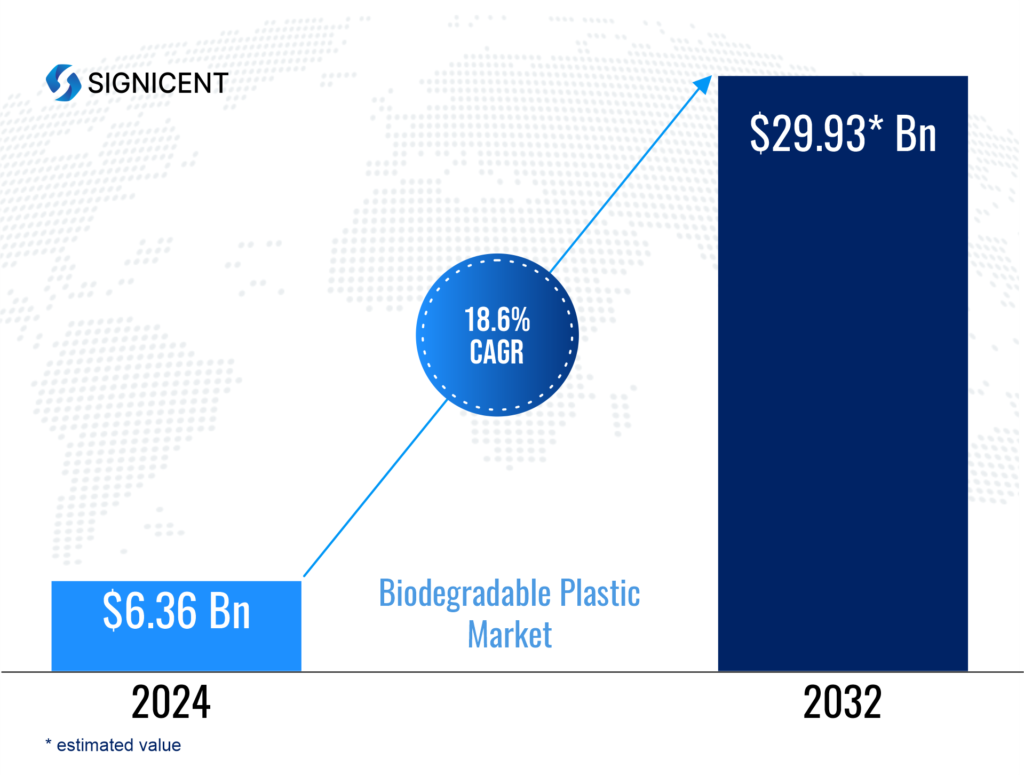
Key Players in Bioplastics Innovation
Several companies are at the forefront of bioplastic innovation, including:
Leading Companies in Medical Bioplastics

Emerging Startups Pioneering Medical Bioplastics

Signicent’s Role in Bioplastics Innovation
Signicent actively supports clients in adopting bioplastics by identifying innovative solutions through technology scouting, analyzing market trends and competitor advancements with patent landscape analysis, ensuring compliance with sustainability and medical safety standards, and assisting in material testing and validation to help clients select the most suitable bioplastic materials.
In a recent case, a global medical device manufacturer approached Signicent to explore bioplastics for their packaging solutions. Through extensive technology scouting and material analysis, Signicent identified biodegradable PLA-based materials that met regulatory requirements while ensuring product safety. Additionally, a detailed patent landscape analysis provided insights into market trends, allowing the client to make informed strategic decisions. As a result, the client successfully transitioned to bioplastic-based packaging, significantly reducing their carbon footprint and enhancing their position in sustainable healthcare solutions.
Future Outlook
Bioplastics represents a groundbreaking opportunity for the medical industry to transition toward sustainability without compromising functionality or patient safety. By addressing environmental concerns, reducing carbon emissions, and offering innovative applications, bioplastics are paving the way for a greener future. While challenges remain, ongoing research, technological advancements, and collaborative efforts are poised to overcome these hurdles, ensuring that bioplastics become a staple in the medical field.
As the world shifts toward eco-friendly solutions, the adoption of bioplastics in the medical industry is not just a trend but a necessity. Embracing this sustainable innovation will benefit not only the environment but also the healthcare system and the patients it serves. The time to act is now—bioplastics are the key to a healthier planet and a healthier future.
About Signicent LLP
We assist businesses globally in their technology innovations, R&D, new product development, patents, valuation, product commercialization & market research needs.
Services Offered:
- Patent Landscape
- Patent Portfolio Analysis
- Patent Invalidity Search
- Patent Licensing Services
- Freedom to operate (FTO)
- Chemical Structure Search
- Design Patent Search
- Technology Scouting
- Technology Landscape Analysis
- Technology gap analysis
- Technology Intelligence
- Market Research
- Bio Sequence Search
- Manufacturers Search/ Supplier search
Elevate your Innovation and Research with Signicent’s cutting edge approach to assist you with Technology and Market related matters alongside the IP aspect of the analysis.
